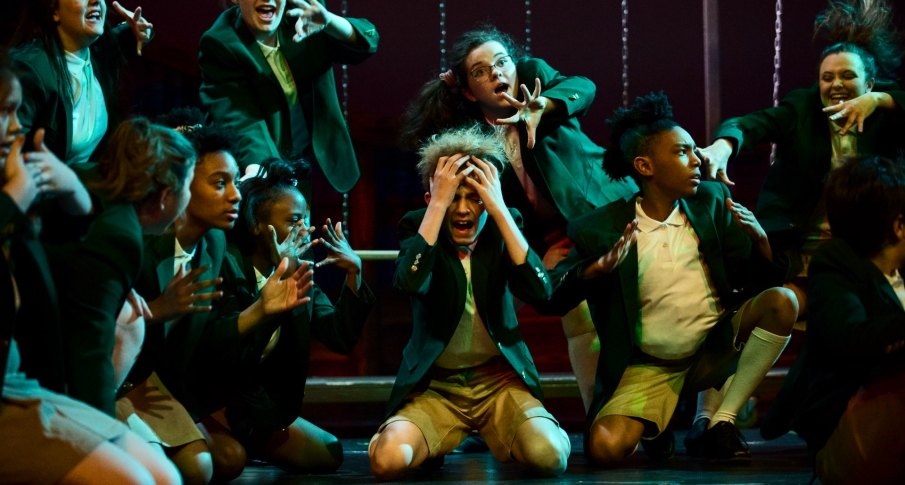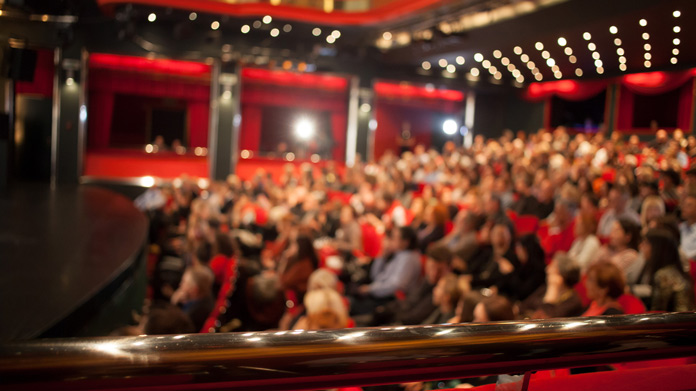Are you curious to explore the vibrant world of performing arts? From captivating theater productions to awe-inspiring dance performances, the realm of performing arts is a dazzling tapestry of creativity and expression. In this article, we will delve into the different types of performing arts that showcase the immense talent and passion of artists worldwide. So, grab a front-row seat and get ready to be enthralled by the mesmerizing world of performing arts!
When we speak of performing arts, we often envision the grandeur of theater. The stage becomes a portal to a different reality, where actors breathe life into characters and transport us to captivating narratives. From classical plays to contemporary productions, theater offers an immersive experience that engages our emotions and intellect.
But the performing arts extend far beyond the boundaries of theater. Dance, for instance, takes center stage as a form of artistic expression that transcends language. With graceful movements and rhythmic precision, dancers communicate stories, ideas, and emotions that words alone cannot convey. From ballet’s ethereal elegance to hip-hop’s high-energy beats, dance captures the essence of human emotions and experiences.
Expand your horizons and dive into the world of opera, where the power of music and theater merge to create a truly enchanting experience. Opera combines vocal artistry, orchestral music, and dramatic storytelling to weave tales of love, tragedy, and everything in between. Whether it’s the soaring melodies of Puccini or the dramatic flair of Verdi, opera transports us to a realm where emotions are heightened and hearts are stirred.
Music concerts, circus performances, and even stand-up comedy shows all fall under the umbrella of performing arts. Each unique form showcases the immense talent and creativity of artists who dedicate their lives to entertaining and inspiring audiences. So, whether you find yourself captivated by the soul-stirring melodies of a symphony or laughing until your sides ache at a comedy show, remember that the performing arts have the power to connect us, move us, and remind us of the beauty of human expression.
In this article, we will explore the different types of performing arts, from theater and dance to opera and beyond. Join us on this exhilarating journey as we delve into the captivating world of artistic expression and discover the magic that awaits on the stage. So, sit back, relax, and let the show begin!

What Are the Different Types of Performing Arts?
Performing arts encompass a wide range of artistic disciplines that involve live performances in front of an audience. From music and dance to theater and circus, performing arts offer a diverse and vibrant world of creative expression. In this article, we will explore the various types of performing arts and delve into their unique characteristics and significance.
Theater
Theater is one of the oldest and most well-known forms of performing arts. It involves the portrayal of characters and stories through live performances on a stage. Theater productions can range from classic plays to contemporary works, encompassing a wide range of genres such as comedy, drama, tragedy, and musical theater. Actors bring characters to life, using their voice, body language, and emotions to captivate the audience and convey the essence of the story. Theater provides a platform for exploring complex themes, societal issues, and human emotions, making it a powerful and thought-provoking art form.
In addition to traditional theater, there are various subcategories within the realm of performing arts. These include physical theater, which emphasizes movement and non-verbal communication, and experimental theater, which pushes the boundaries of traditional storytelling techniques. Immersive theater, on the other hand, actively involves the audience in the performance, blurring the line between spectator and performer. Each form of theater offers a unique experience, showcasing the versatility and creativity of the performing arts.
Theater vs. Film: Exploring the Differences
While both theater and film involve storytelling through performances, they differ in several key aspects. Theater is live and immediate, with actors delivering their lines and performing in real-time in front of an audience. This creates a sense of intimacy and connection between the performers and the viewers. In contrast, film productions are pre-recorded and edited, allowing for multiple takes and post-production enhancements. Films can also utilize special effects and visual techniques that are not readily achievable in a live theater setting.
Another distinction lies in the presence of a physical stage in theater productions, whereas films are shot on location or in studios. Theater relies heavily on the actors’ stage presence and their ability to engage the audience without the aid of close-up shots or camera angles. Additionally, theater performances often involve a larger ensemble cast, while films can have smaller, more focused casts. Both mediums have their own unique strengths and offer different experiences for both performers and viewers.
Dance
Dance is a form of performing art that combines movement, rhythm, and expression to create a visual and emotional spectacle. It encompasses a wide range of styles and techniques, including ballet, contemporary, jazz, hip-hop, and many more. Dance can be performed solo or in groups, with choreography serving as the foundation for the movements and storytelling. Through dance, performers communicate ideas, emotions, and narratives, captivating audiences with their skill, grace, and artistry.
Ballet, with its elegant and precise movements, is one of the most recognizable forms of dance. It originated in the courts of Renaissance Italy and has evolved into a highly technical and disciplined art form. Contemporary dance, on the other hand, embraces experimentation and innovation, often blending different styles and incorporating elements from other performing arts disciplines. Jazz and hip-hop dance styles bring energy, rhythm, and cultural influences, reflecting the vibrant diversity of the performing arts.
The Intersection of Dance and Music
Music and dance often go hand in hand, complementing and enhancing each other’s impact. Many dance performances are accompanied by live or recorded music, with the rhythm and melody guiding the movements of the dancers. Choreographers create routines that synchronize with the music, creating a harmonious fusion of sound and movement. This collaboration between dancers and musicians adds depth and emotion to the performance, creating a multisensory experience for the audience.
Furthermore, dance can also be a form of storytelling, conveying narratives and emotions without the use of words. The movements of the dancers, their gestures, and expressions all contribute to the narrative arc of the performance. Whether it’s a classical ballet depicting a timeless tale or a contemporary piece exploring social issues, dance has the power to communicate powerful messages and evoke profound emotional responses.
Music
Music is a universal language that transcends cultural boundaries and speaks to the soul. It encompasses a vast array of genres, styles, and instruments, offering endless possibilities for artistic expression. From classical symphonies to rock concerts, music performances engage and captivate audiences through harmonies, melodies, and rhythms. Musicians utilize their voices or instruments to create a wide range of sounds and emotions, transporting listeners to different worlds and evoking powerful emotional responses.
Within the realm of music, there are numerous genres and subgenres, each with its own unique characteristics and cultural significance. Classical music, rooted in centuries of tradition, showcases the mastery of composers and performers. Pop, rock, jazz, blues, and hip-hop music, on the other hand, reflect the ever-evolving nature of popular culture and contemporary trends. Each genre offers its own distinct style, instrumentation, and performance techniques.
The Impact of Technology on Music Performances
The advent of technology has revolutionized the way music is created and performed. From the invention of electric instruments to the rise of digital production and streaming platforms, technology has opened up new avenues for musicians to explore and connect with audiences. Live performances now incorporate cutting-edge audiovisual effects, lighting, and stage design, creating immersive and visually stunning spectacles. Additionally, the internet has provided musicians with global platforms to share their music and reach a wider audience, breaking down geographical barriers and fostering a global music community.
Despite the advancements in technology, live music performances continue to hold a special place in the hearts of music lovers. The energy and connection between the performers and the audience in a live setting are unparalleled, creating an atmosphere of shared emotion and collective experience. Whether it’s a small intimate concert or a massive stadium show, live music performances are a testament to the power and lasting impact of the performing arts.
Exploring Other Forms of Performing Arts
In addition to theater, dance, and music, there are numerous other forms of performing arts that deserve recognition. These include:
- Circus arts, which combine acrobatics, clowning, aerial acts, and more to create thrilling and visually captivating performances.
- Opera, a unique art form that combines music, theater, and visual spectacle to tell stories through the power of the human voice.
- Puppetry, where puppets are brought to life through the skillful manipulation of puppeteers, creating enchanting and whimsical performances.
- Comedy, encompassing stand-up comedy, improvisational comedy, sketch comedy, and more, providing laughter and entertainment through humorous performances.
Each of these forms of performing arts offers its own distinct style and artistic approach, contributing to the rich tapestry of creative expression.
In Conclusion
The world of performing arts is a vibrant and diverse landscape, encompassing a myriad of art forms that captivate, inspire, and entertain audiences. From the theatrical performances that transport us to different worlds, to the expressive movements of dance that communicate without words, and the harmonies and melodies of music that resonate deep within our souls, performing arts have the power to touch us on a profound level. Exploring the different types of performing arts allows us to appreciate the immense creativity and talent of artists across the globe, and reminds us of the universal language that connects us all.
Key Takeaways: What Are the Different Types of Performing Arts?
Performing arts include various types of artistic expressions that are performed in front of an audience.
- Theater: This involves live performances of plays and musicals, where actors portray characters and tell stories through dialogue, song, and dance.
- Dance: Dance is a form of artistic expression that involves rhythmic movements of the body, often accompanied by music.
- Music: Music is a universal language and encompasses various genres like classical, jazz, rock, pop, and more.
- Opera: Opera combines music, singing, acting, and stagecraft to create a dramatic performance.
- Circus: Circus performances include acrobatics, juggling, tightrope walking, and other impressive feats of skill and agility.
Frequently Asked Questions
What is performing arts?
Performing arts refers to artistic forms that are performed live in front of an audience. It includes various disciplines such as dance, music, theater, and opera. These forms of art require performers to use their bodies, voices, and instruments to express emotions, tell stories, or convey a message.
Performing arts can take place in different settings, including theaters, concert halls, outdoor spaces, and even virtual platforms. It is a vibrant and dynamic field that allows artists to showcase their talent and connect with audiences in a powerful way.
What are the different types of dance?
Dance is a form of performing art that involves rhythmic movement of the body. There are various types of dance styles from different cultures around the world. Some popular dance forms include ballet, contemporary, jazz, hip-hop, tap, and folk dances.
Ballet is a classical dance form characterized by precise and graceful movements. Contemporary dance combines elements of ballet, modern, and jazz. Jazz dance is known for its energetic and syncopated movements. Hip-hop dance originated from street culture and incorporates urban dance styles. Tap dance involves creating rhythms with the feet, and folk dances represent the traditional dances of a particular culture or region.
What are the different types of music?
Music is a universal language that has the power to evoke emotions and create connections. There are various genres and styles of music that cater to different tastes and preferences. Some common types of music include classical, pop, rock, jazz, hip-hop, and electronic music.
Classical music is known for its complexity and rich history, with composers like Mozart and Beethoven. Pop music is popular among the masses and often features catchy melodies and lyrics. Rock music is characterized by its electric guitars, drums, and powerful vocals. Jazz is a genre that emphasizes improvisation and syncopated rhythms. Hip-hop music originated from African American culture and is known for its rhythmic beats and rhyming lyrics. Electronic music relies heavily on electronic instruments and synthesizers to create unique sounds.
What are the different types of theater?
Theater is a form of performing art that encompasses a wide range of genres and styles. Some common types of theater include drama, comedy, musical theater, and experimental theater.
Drama refers to plays that explore serious and often complex themes. Comedy, on the other hand, aims to entertain and provoke laughter. Musical theater combines acting, singing, and dancing to tell a story through songs and dialogue. Experimental theater pushes the boundaries of traditional theater by exploring unconventional storytelling techniques and staging.
What is opera?
Opera is a form of music theater that combines singing and acting. It originated in Italy in the late 16th century and has since become a popular art form around the world. Operas are typically performed in opera houses and feature elaborate sets, costumes, and orchestral accompaniment.
An opera tells a story through a combination of music, lyrics, and dramatic performances. It often involves solo singers, a chorus, and an orchestra. The themes and stories in opera can range from love and tragedy to historical events and mythology.

What is Performing arts? Explain Performing arts, Define Performing arts, Meaning of Performing arts
Final Summary: Exploring the Diverse World of Performing Arts
As we conclude our journey through the captivating realm of performing arts, we have uncovered a wealth of creativity and expression that knows no bounds. From the electrifying energy of dance to the powerful emotions conveyed through theater, each form of performing art offers a unique experience that captivates both the performers and the audience. Whether you find yourself swept away by the graceful movements of ballet or enthralled by the melodic harmonies of music, there is something for everyone in the world of performing arts.
In this ever-evolving landscape, we have discovered the immense diversity within performing arts, with each discipline showcasing its own set of skills, techniques, and cultural influences. From the rhythmic beats of percussion instruments in music to the intricate footwork of traditional dance forms, the performing arts provide a platform for individuals to channel their creativity and tell stories that resonate with audiences around the world.
In conclusion, the world of performing arts is a vibrant tapestry of human expression, offering a multitude of avenues for individuals to explore their passions and share their stories. Whether you are a performer, a spectator, or simply a lover of art, immersing yourself in the different types of performing arts can be a transformative and enriching experience. So, let us continue to embrace the magic that unfolds on stage, celebrating the power of creativity and the beauty of the human spirit through the wondrous world of performing arts.




